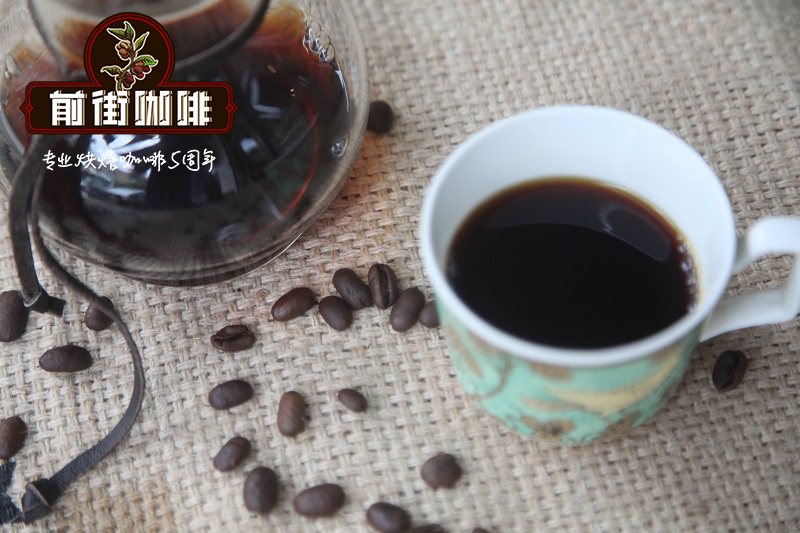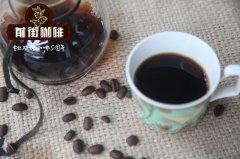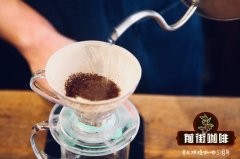What are the 11 most common varieties of coffee beans

Professional coffee knowledge exchange more coffee bean information please follow the coffee workshop (Wechat official account cafe_style)
Many years ago, a goat found a coffee tree in Abyssinia, Ethiopia. Shepherd Khaldi noticed that his goat became very excited after eating the berries on the tree. He also gave it a try. And this is the origin of coffee. Whether the story is true or not, most Arabica coffee beans do come from Ethiopia, Sudan and Yemen. Among them, most coffee bean species have undergone natural mutation or artificial hybridization after leaving the country of origin. Of course, I can't include all the beans that have been found in a short article. today, let me explain in detail the 11 most common coffee beans on the market as well as their origin and characteristics.
Iron pickup (Typica)
This is a natural variety originating from Yemen. At present, the iron pickup is the most common bean seed in the world, because the Dutch once grew the coffee in Indonesia, and the French brought the coffee to the Caribbean and then spread to Central and South America. The production of iron pickup coffee is small and is extremely vulnerable to rust leaf disease, so most plantations do not grow iron pickup coffee alone. Unlike other beans, the fruit of Tieka coffee is cone-shaped. Iron pickup coffee is of high quality, so it is very popular in plantations all over the world. If planted properly, Tippica coffee has high sweetness, pure taste and pleasant acidity.
Bourbon (Bourbon)
Like Ironhide, bourbon is a natural variety native to Yemen. Its name comes from Bourbon Island, where it was originally planted, which is now the island of Reunion. During the French colonial period, the French often exported this kind of coffee overseas, especially in the United States. Bourbon coffee fruit is short and round, with high density of pulp and seeds. Bourbon coffee usually has high sweetness and bright acidity. The yield of this coffee is 20-30% higher than that of iron pickup, but it is still regarded as a low-yield bean seed and is also vulnerable to rust leaf disease. Most bourbon fruits are red, but two natural varieties show different colors, orange bourbon and yellow bourbon. Orange bourbon is sweeter, while yellow bourbon is more acidic.
Katura (Caturra)
Bourbon and Tieka have spawned many natural mutants and artificial hybrids, and Katura is one of them. Katula is a natural variety of bourbon coffee, originally found in Brazil. Kattura coffee is the most common in Central America. It has shorter plants, easier to pick, and a higher yield than bourbon. But because of this, Catula coffee tastes thinner and less sweet than bourbon, but it has bright acidity, pure taste and pleasant acidity.
Elephant bean (Maragogype)
Elephant bean is a variety of iron pickup coffee, the individual is large, but the yield is lower. After baking, the reminder of Elephant beans is two cups of ordinary bourbon and most variants of iron pickup. You may think that the bigger the beans, the richer the taste, but this is not the case. Although the beans taste more mellow, they lack a sense of complexity and are often used to make Italian concentrated combinations to increase the overall complexity.
New World (Mundo Novo)
New world is a natural hybrid of red bourbon and Sumatra iron pickup, especially in places such as Brazil, accounting for 40% of the total amount of Arabica coffee grown in Brazil. The new world has a high yield, 30-40% higher than ordinary bourbon coffee, and has strong disease resistance. In general, New World coffee has a higher yield per plant and lower sweetness.
Catua (Catuai)
Katuai is a hybrid of New World and Katula. If planted properly, Katuai is very sweet. Katuai is known for its strong adaptability and can grow in stormy areas, so it is considered to be one of the safest beans.
Cartimer (Catimor)
Katimo is a hybrid of Timo (a natural variety of Robusta) and Katula, produced in a laboratory in Portugal. Katimo has strong disease resistance and adaptability, high yield, easy to take care of, and the taste is unique, with a sharp sour taste, and sometimes with a little astringency. Katimer can be said to be one of the most successful cases of laboratory breeding.
Castillo (Castillo)
Castillo is another laboratory-bred bean that can be said to be more successful than Katimer. To trace its origin, Castillo is made of mutant and mixed varieties of Katimo coffee after a long period of cultivation and artificial intervention. Cenicafe, Colombia's National Coffee Research Center, has long been committed to finding beans with high disease resistance and strong adaptability. Although the taste of Castillo coffee is slightly poor, the quality of Castillo coffee is improving as more and more farmers grow this variety of coffee in Colombia and the technology of planting and raw bean processing is improving.
Pacamara (Pacamara)
Pacamara, born at the Salvadoran Coffee Research Center, is a hybrid of elephant beans and Pacas (a natural variety of bourbon). It looks like beans, but it tastes full of flowers, high sweetness and pleasant acidity.
SL28 and SL34
In the 1930s and 1960s, Scott Labs collaborated on Kenyan coffee and local producing areas, which led to two artificial hybrids of bourbon and Ethiopian heirloom coffee. The yield of the two kinds of coffee was not high, and the yield of SL34 was slightly higher than that of SL28. The disease resistance of the two beans is mediocre, but taste is the key to cultivating them. Today, two kinds of coffee have become the main coffee beans grown in Kenya, accounting for 90% of Kenya's total coffee exports. The two kinds of coffee have high sweetness, aroma and rich taste.
Rose summer (Gesha)
Rosa is perhaps one of the hottest beans today, a variety of Ethiopian heirloom coffee. This kind of coffee was first found in Rosa (or Abyssinia). Because of its extremely low yield, this kind of coffee is extremely precious. Many farmers have tried to cross with high-yield beans and have achieved great success in Central America and Panama. Among them, the La Hacienda Esmeralda plantation in Panama is famous for producing the best quality and most expensive rose summer coffee in the world. Their rose summer coffee has won the "Best Coffee in Panama" award, with very unique bergamot, jasmine and peach aromas.
Important Notice :
前街咖啡 FrontStreet Coffee has moved to new addredd:
FrontStreet Coffee Address: 315,Donghua East Road,GuangZhou
Tel:020 38364473
- Prev

Panamanian coffee style geisha coffee flavor and taste
For more information on coffee beans, please follow the coffee workshop (official Wechat account cafe_style) Coffee Book Coffee basics a quick and easy guide (Kevin Knox, John Wiley Sons Publishings) describes Panamanian coffee as follows: it is at best similar to coffee produced in the Tres Rios region of Costa Rica: ping
- Next

What's the difference between new beans and old beans in coffee? The preservation of coffee beans the way coffee is stored.
Professional coffee knowledge exchange more information on coffee beans Please follow the coffee workshop (official Wechat account cafe_style). The raw beans harvested during the harvest period are called new beans, while those harvested for more than three years are called old beans. Although the recent mainstream is New Dou, Lao Dou also has loyal fans. Understand the advantages of new beans and old beans, and enjoy the flavor. ● new beans give off fresh flavor
Related
- Beginners will see the "Coffee pull flower" guide!
- What is the difference between ice blog purified milk and ordinary milk coffee?
- Why is the Philippines the largest producer of crops in Liberia?
- For coffee extraction, should the fine powder be retained?
- How does extracted espresso fill pressed powder? How much strength does it take to press the powder?
- How to make jasmine cold extract coffee? Is the jasmine + latte good?
- Will this little toy really make the coffee taste better? How does Lily Drip affect coffee extraction?
- Will the action of slapping the filter cup also affect coffee extraction?
- What's the difference between powder-to-water ratio and powder-to-liquid ratio?
- What is the Ethiopian local species? What does it have to do with Heirloom native species?

